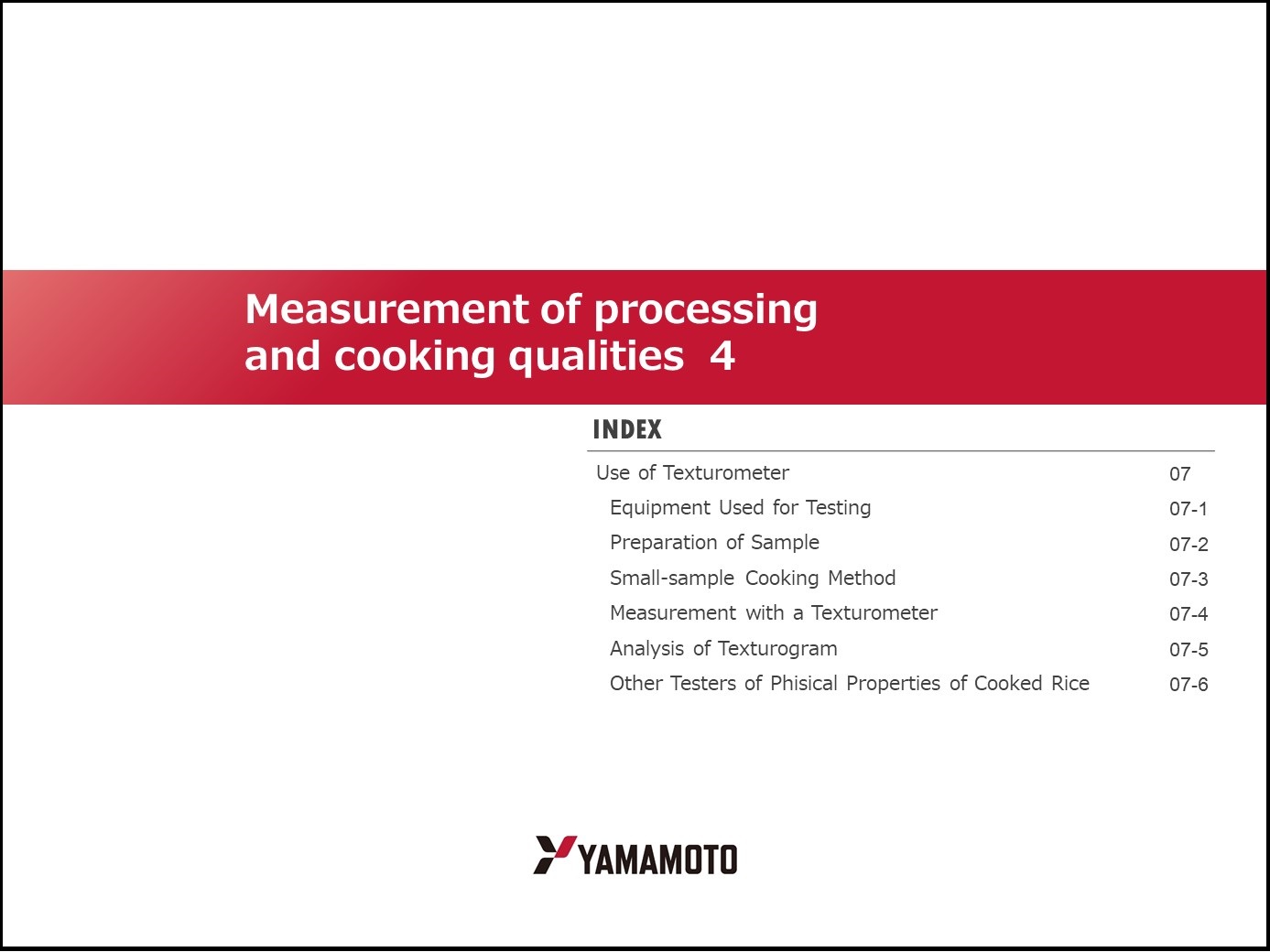66. Measurement of processing and cooking qualities 4
- INDEX -
Use of Texturometer
Equipment Used for Testing
Preparation of Sample
Small-sample Cooking Method
Measurement with a Texturometer
Analysis of Texturogram
Other Testers of Phisical Properties of Cooked Rice
Use of Texturometer
According to the result of past studies, a sensory test on the palatability of cooked rice is said to be dictated by the physical characteristics of cooked rice such as hardness and stickiness. Various testers are available to measure the physical characteristics of cooked rice, which basically determine the physical properties of cooked rice, by measuring the force required to press cooked rice grains or those in a testing receptacle until they are squashed. A texturometer determines the characteristic values of cooked rice, such as stickiness, hardness and adhesiveness, by crushing the cooked rice repeatedly with a plunger at an appropriate speed and measuring the force required to do so, and also the force required to pull up the plunger. When the texturometer’s measurements were compared with the results of an evaluation using a sensory test, it was found that adhesiveness and hardness/viscosity could be an important index of palatability. The problem is that to offset variations among sample grains, it is necessary to take measurements for one grain five to ten times. A joint study by Juliano of IRRI found that if a sample cooked under the controlled conditions is used for testing, measurements among different physical property testers have a high correlation with each other.
Equipment Used for Testing
Constant temperature and humidity oven, dryer, moisture meter:
In addition to those listed in the title, following apparatuses are used.
Electric rice cooker: A cooker applying the direct heating method in which its inner pot is directly heated is most appropriate. The test requires the rice cooker to start cooking immediately the switch is turned on, and upon completion of the cooking process and starting the cycle for keeping it warm, let it settle by turning the switch off, so there is no need for a warming function. One with the simplest structure is best suited for the purpose.
Aluminum cup: A cup with an opening 55mm in diameter, a bottom 40mm in diameter, and a height 55mm is ideal. Prepare cups with dimensions as close as possible to these.
Preparation of Sample
Prepare a milled rice sample with a 90% milling yield, which is preferably kept in a constant temperature and humidity oven to have a consistent moisture content (approximately 14%). Wipe off rice bran with a piece of gauze, remove broken and immature grains and kept them in a polyethylene bag to maintain their moisture content constant.
